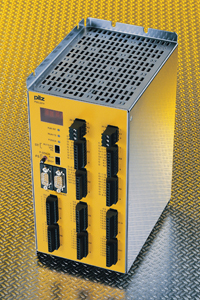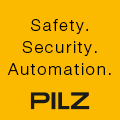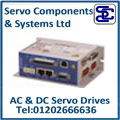
Posted to News on 23rd Oct 2006, 17:22
Explaining the changes in the 2006 version of BS EN 60204-1
BS EN 60204-1 is one of the most important machinery safety standards and a new version was published in June 2006. This article by Kevin Ives, a consultant with Pilz Automation Technology, looks at the changes introduced and the implications for machine builders.

Back in May 2002 Pilz compared the existing standard BS EN 60204-1:1998 (Safety of machinery. Electrical equipment of machines. General requirements) with the fifth edition of the Committee Draft of IEC 60204-1, as it was anticipated that this was about to be ratified and a new version of EN 60204-1 would soon follow. Such is the ponderous nature of the standards-making process that BS EN 60204-1:2006 was not published until June 2006.
Most of the anticipated changes in the standard have remained, but there have also been some others. Nevertheless, the most important change remains the acceptance of programmable electronic safety-related systems, and this is reflected in the very first sentence of the Scope. Furthermore, the writers have made it clear, by means of a note, that the term 'electrical' includes electrical, electronic and programmable matters. Within the body of this part of the standard it is clause 9 that now allows the use of software, programmable electronic systems and communications networks in machine safety systems. This is a major step forward, in that it brings the standard into line with the state-of-the-art. Indeed, in comparison with this, the other changes seem relatively minor.
Apart from the explicit inclusion of programmable electronic equipment, the Scope remains substantially unchanged. There are, however, alterations to the Normative References, but this is only to be expected due to the ever-changing standards landscape. Most of the definitions remain unchanged, though there are revisions to, for example, the definitions of 'control circuit (of a machine)', 'controlled stop' and 'electronic equipment'. Surprisingly, no definition is provided for 'programmable'.
In addition to clause 9, which has already been mentioned, clause 5.4 is also particularly notable. This clause relates to devices for switching off and for the prevention of unexpected start-up, and it now permits control isolation to be used in specific circumstances - such as for inspections or adjustments.
Changes in detail
Clause 7.2.3 (Power circuits) gains directions on the disconnection of conductors, and clause 7.2.4 (Control circuits) now includes examples of overcurrent protection for control circuits supplied by transformers. Whereas clause 7.3 previously dealt with overcurrent protection of motors, there are now three separate clauses covering overload, over-temperature and current limiting.
Clause 8 (Equipotential bonding) benefits from a revised diagram giving an example of equipotential bonding for electrical equipment of a machine; mobile machines now have their own clause (8.2.7), and there is a new clause 8.2.8 for additional protective bonding requirements for electrical equipment having earth leakage currents higher than 10mA AC or DC. Clause 8.3 has been retitled 'Functional bonding' and has been rewritten as a single clause instead of the three in the previous version of the standard.
Clause 9.1.4 of the old standard related to the connection of control devices and was concerned with switching elements in the conductors connected to the protective bonding. However, this clause has been deleted in the new standard.
Clause 9.2.4 (Suspension of safety functions and/or protective measures) has been revised and now also refers to cableless control stations - though cableless control stations were already mentioned elsewhere in the previous version of the standard.
Clause 9.2.5.4.2 refers to the emergency stop function. Importantly, the comments regarding the use of programmable systems and systems using communication networks or links have been removed - which therefore gives control system designers more scope than before. Furthermore, the old clause 9.2.7.4 (Serial data communications) is deleted altogether in the new standard.
Clause 9.3.2 was previously titled 'Overtravel limits'; it is now 'Exceeding operating limits' and includes other operating limits - such as speed and pressure - as well as position.
Clause 9.4.1 (General requirements for control functions in the event of a failure) now refers to retention of memory in the event of battery failure or removal and the prevention of unauthorised or inadvertent alteration of the memory.
Clause 9.4.3.1 (Earth faults) is expanded in the new standard and outlines three methods; drawings are included.
Clause 10.1.2 (Location and mounting of operator interface and machine-mounted control devices) adds references to foot-operated control devices, whereas only hand-operated controls were mentioned in the old version of the standard.
Clause 10.3.1 (General requirements for indicator lights and displays) now says that indicator light circuits for warning lights shall be fitted with facilities to check the operability of these lights. And clause 10.3.2 (Colours) now defines the order in which lamps should be installed on a lamp tower).
Clause 10.7 (Emergency stop devices) has had three of the sub-clauses deleted (the information is now dispersed elsewhere within the standard), but otherwise the general gist remains as before.
Clause 10.8 (Emergency switching off devices), has been changed a little but, again, the text remains broadly similar to the previous version.
The old clause 10.9 (Displays) has been replaced by a new clause 10.9 (Enabling control devices) that gives advice on the operation of two- and three-position hold-to-run type devices.
Clause 11 of the old standard, relating to electronic equipment, has been deleted in the new draft and, as a result, the old clauses 12 to 19 have been renumbered as clauses 11 to 18 in the new standard. In the main these clauses have changed very little, though clause 12 (Conductors and cables) has been revised, with several tables being either modified or deleted. Also clause 18 (Verification) has been renamed from the old clause 19 Testing and verification, plus many more sub-clauses have been included to cover test methods in TN systems. These are mainly concerned with the verification of the bonding circuits.
Annex revisions
Aside from the main body of the standard, there are also changes in the annexes: a new Annex A is concerned with protection against indirect contact in TN-systems; Annex B (Enquiry form for electrical equipment of machines) has been reformatted; and a new Annex C gives examples of machines covered by the standard (making it similar to the old Annex A).
The new Annex D (Current-carrying capacity and overcurrent protection of conductors and cables in electrical equipment of machines) is similar to the old Annex C, and the new Annex E is the same as the old Annex D (Explanation of emergency operation functions).
Annex F (Guide for the use of this part of IEC 60204) is new, as is Annex G (Comparison of typical conductor cross-sectional areas). Other new annexes are ZA (Normative references to international publications with their corresponding European publications) and ZZ (Coverage of Essential Requirements of EC Directives).
While there is no legal requirement (in the UK, at least) to comply with the requirements of standards that are harmonised to the Machinery Directive, such as BS EN 60204-1, there is a legal requirement to meet the Essential Health and Safety Requirements of the Directive. Nevertheless, harmonised standards are 'best practice' documents and therefore offer users an 'approved route' to compliance. While the 1998 version of BS EN 60204-1 did not 'outlaw' the use of programmable electronic equipment in safety-related control systems, many people felt uncomfortable with using such equipment in the knowledge that it was discouraged under the prevailing standard. Although other standards, such as BS EN 61508, allowed programmable electronic systems to be used, it is reassuring that, at long last, BS EN 60204-1 now makes provision for the use of state-of-the-art safety systems.
Pilz Automation Technology has consultants that can advise on compliance with BS EN 60204-1:2006 and other machinery safety standards.















